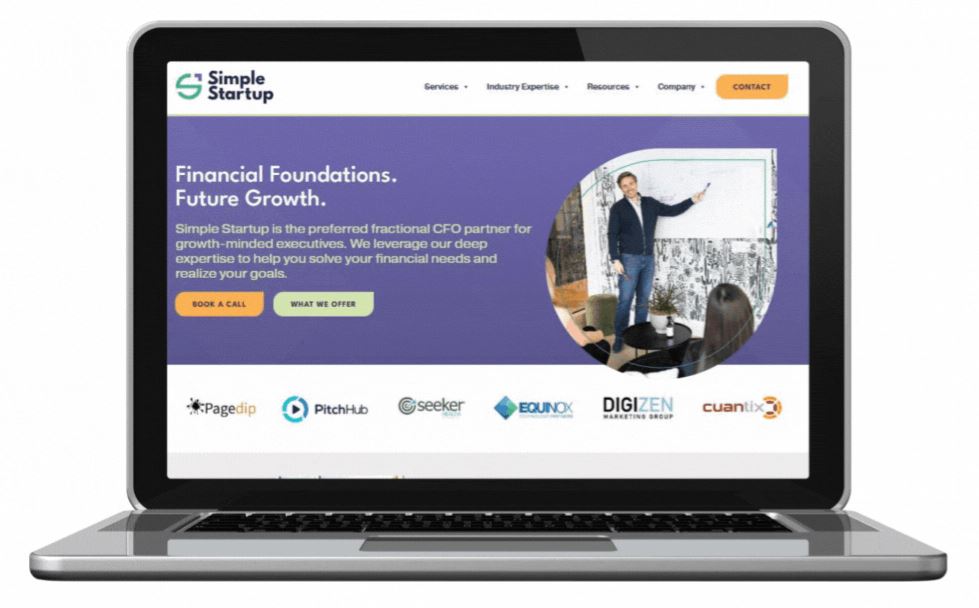Running on Data
In the last two articles of our company metrics series, we got down to the nitty-gritty on tracking sales metrics, including the elements of a standard sales pipeline and the true value of a customer.
In this article, we’re pivoting our focus to operations, and more specifically we’re going to take a look at the three types of operational excellence, customer service, physical product, and operational excellence, that will ultimately help you choose the right operational metrics for your business’s objectives. Because as we’ve said before, “What gets tracked gets improved!”
What is the Role of Operations?
Since we always like to ensure we’re starting with the same basic understanding of any subject we talk about on our blog, let’s first define the role of operations in a business. If a business was a car, then you could think of operations as the engine because the engine keeps everything running and does a lot of behind the scenes work. Formally speaking, operations manage the inner processes of a business to help it run efficiently.
With this definition in mind, it is easy to see that tracking operational metrics could lead to opportunities for improvement (#kaizen) and efficiency across an organization. In our experience, no matter the type of business, whether product or service, the business will focus primarily on one of the three operational excellence types – customer service, physical product, and operational – to make improvements and adjustments in their operations.
 1) Customer Service Excellence
1) Customer Service Excellence
Let me tell you a story I heard from a friend. This friend attended a business strategy conference and had the opportunity to hear someone present on the topic of Zappos’ customer service strategy. During this presentation, the presenter actually went so far as calling Zappos to inquire about buying a grill.
Now for those of you who aren’t familiar with Zappos, they are a shoe company. As you can imagine the Zappos customer service representative initially explained to the presenter that they actually sell shoes, and offered to help them with that. But the presenter was insistent on getting help to purchase a grill so the Zappos customer service representative asked the presenter a number of questions about how they would use their grill, if they were looking for gas or coal, and so on and so forth. At the end of this conversation, the Zappos representative got the presenter’s email and shared links to their top grill recommendations that fit their preferences and price range.
What this story illustrates is that Zappos will go to nearly any length to make sure the customer is happy even if it means helping them buy a product they don’t even sell. Essentially making Zappos the ideal vision of a customer service excellence company or a company that focuses on the customer’s experience first and foremost.
Sample Customer Service Excellence Metrics
Zappos takes a unique approach to their operational metrics that help them drive service into their company culture and meet their goal to go above and beyond customer expectations and build a good relationship in the process. Their metrics include:
- Total Call Time. The goal is to ensure customer service employees spend at least 80% of their time in customer-facing interactions and to discourage employees from simply pushing through their queue of customer calls.
- Happiness Experience. This metric measures the emotional connection and wow factor the customer service employee was able to build into their customer interaction. The goal being a 50 point or more average to encourage a high amount of quality relationship building during a call which is a key piece for Zappos to encourage return customers.
- Employee Attendance. Happy customer service employees translate to employees that want to do their job well and thus create a positive customer experience and one way in which Zappos instills this in their company is by tracking and rewarding good attendance.
Instead of focusing on typical customer service metrics like call volume and queue length or the number of perfect orders, Zappos takes an approach that encourages employees to go the extra mile with customers with the hopes of building a highly loyal customer base that will ultimately help them continue to grow their business.
2) Physical Product Excellence
For businesses that focus primarily on physical product excellence, product design can play a big part in achieving high marks in this area. One such company that comes to mind that has been able to raise customer standards when it comes to product design is none other than Apple.
Apple was able to take a functional necessity, like the cell phone and the computer, and transform them into products of beauty through an innovative and aesthetically appealing design that moves way beyond the functional requirements of the products. This move encouraged the development of an emotional connection between customers and their products and ultimately allowed them to charge much higher prices than their competitors.
By turning the general industry’s design of typical mass-market products like laptops on its head, Apple was able to drive a high level of market success for their products and embody what it means to be a company that focuses on physical product excellence.
Sample Physical Product Excellence Metrics
Success in design innovation and a customer’s emotional reaction to a product can be difficult to measure, but the following metrics are sample physical product excellence metrics that are likely similar to what Apple uses to determine how well they are doing in their focus area.
- Customer Loyalty & Return Customers. Shifts in these types of metrics can show how customer sentiments towards a product change over time. Since many Apple product users are long term customers and even lifetime users, Apple can confirm that consumers still consider their products the standard of excellence. If this metric slips, then Apple would know they need to adjust their products to increase their desirability in the eyes of customers again.
- Month Over Month Gains in Sales and Profits. Similarly to above, when sales and profits are rising it depicts that customers value the excellence of Apple’s products over their competitors. If these metrics begin to trend down, then customers are choosing to purchase elsewhere and their value of Apple products is declining.
When I think of innovative companies, Apple is always top of mind, so it makes sense that tracking typical product related metrics like total cost of goods sold or cost per unit sold doesn’t tell the right story about their vision for physical product excellence. Achieving physical product excellence is centered around understanding your customer and how they use a product and using that to inform a product design with serious wow factor and market staying power.
 3) Operational Excellence
3) Operational Excellence
The final operational excellence type is operational excellence which focuses on continuous improvement in the areas of revenue, cost, and risk. Often companies that are focused on this operational type incorporate the quality and waste minimizing methodologies of Lean or Six Sigma to develop their operational performance improvements. Because of this, you will expect to find a high number of product manufacturing organizations like local Colorado business, CW Hemp, with a focus on operational excellence.
To really bring the concept of operational excellence to life, we’re going to harken back to the OG innovator in this field, Henry Ford and the Ford Motor Company. In the 1900’s Ford was one of 90 US car manufacturers. At this time, cars were all assembled by hand in a process that would take a month or more per car. Henry Ford knew there had to be a way to improve this production time and also knew that if he were able to crack that code he would be able to grow Ford’s share of the growing car industry because he could deliver products to customers faster than the general market.
To this end, Ford developed the moving manufacturing assembly line, a predecessor of lean manufacturing, where operators remained stationary and had access to all tools and supplies required for their job at their station and the car was moved from station to station until it was complete. Through this revolutionary manufacturing method, Ford was able to produce a car in as little as one and a half hours instead of multiple months. This tweak also allowed Ford to cut costs dramatically while also meeting popular demand for cars by the American public. It is this innovation that makes Henry Ford and the Ford Motor Company the OG in operational excellence.
Sample Operational Excellence Metrics
With their new innovations in place, Ford was likely measuring their capabilities in operational excellence with metrics similar to the below.
- Cycle Time in Days. This is calculated by inventory units divided by units per day and is important to track because high inventories mean longer cycle times and make a company less able to be responsive to evolving customer needs. The goal being to buy only enough supplies to fit production requirements while also taking into consideration the state of the industry at the time.
- Opportunity Costs. This metric brings up something Ford refers to as the “the loss of idleness” but is now called opportunity cost, opportunity gap or unrealized revenues due to failure to exploit opportunities (like idle workers, machines or supplies).
- Time to Market. This metric will correlate with profit and profit residuals and allow Ford to keep a pulse on their true profitability.
- Takt Time. Takt time measures the time between the production start time of one unit and the next unit. Knowing where Ford stands for this metric will help track themselves in comparison to the greater industry and identify when and if competitors begin to catch up to their manufacturing line innovations.
The manufacturing industry has come a long way since Ford’s initial innovations, and lean methodologies are now the standard for companies focused on operational excellence practices.
What Operational Excellence Orientation Does Your Company Have?
Now that we’ve reviewed the three main types of excellence – customer service, physical product, and operational – you may be trying to figure out where your company fits in. You might even be wondering can I be two or three of these types? It’s completely normal to integrate components of each operational type into your metric tracking strategy. In fact, it’s great that you’re thinking in this way because it means you want to customize your metrics ‘just right’ for your business’s primary focus!
If you’re looking for a little guidance in choosing operational metrics I would like to refer you back to our four rules for KPI tracking.
Recap on the 4 KPI Rules to Live By:
- Is the KPI Relevant? There’s no point in wasting time tracking data that is not relevant to your business.
- Is the KPI Easy to Track? The value of a metric is diminished the longer it takes to produce the KPI. So if this is the case, maybe there is another indicator that is more simple to procure and will thus provide better insight.
- Is the KPI Easy to Understand? Metrics are useless unless they are easily understandable by anyone reading them.
- Is the KPI Misleading? If your KPI deviates from generally accepted industry practices, then the explanation for this deviation must be highly visible to anyone reading them, otherwise, the KPI is going to be misleading and difficult to understand.
Keeping these four simple rules in mind will make it easier to choose the right operational metrics that are critical to your business and put them to good use in analyzing operational performance.
Your Competitive Advantage
Before we conclude this discussion, there’s another aspect of your operational excellence focus that we haven’t touched on and that is your competitive advantage. The operational excellence focus you choose to pursue will more than likely coincide with your competitive strategy, which is even more reason to focus on your ‘just right’ operational metrics so you know how you measure up to your competition.
What’s the Operational End Goal?
Let’s take the discussion back to our car analogy where the car is the business as a whole and operations is the engine. If you change your oil and your filters or add a supercharger to your engine it’s going to operate more efficiently and faster. These operational improvements will have a trickle-down effect in your business ultimately improving your bottom line.
So by tracking operational metrics you’re able to identify the areas of your business that are operating well (i.e. crushing it) and the areas that could use a boost and implement programs for continuous improvement that will not only help your business grow and achieve more revenue but will also help you serve your customers better.
Change for the Better
At Simple Startup one of our values is Kaizen, which is a Japanese term meaning “change for the better” or “continuous improvement.” To us, this means that we aim to be HIGHLY proactive and to take the lead when identifying and enacting improvements in our business. Even though Kaizen is such a big part of our company’s vernacular we could always use a little help from our friends (like the division leaders in our organization).
If you could use some help identifying the operational metrics unique to your business and then taking them a step further by strategizing opportunities to improve them to meet customer and business needs, we’d love to have a conversation and provide some friendly advice. A quick call with one of our Simple Startup team members is an easy first step to take in your path toward operational excellence.
Book a Discovery Call Today, We’re So Ready to Help >>
Need help tracking all these metrics? Download our handy metric tracker and library here.





